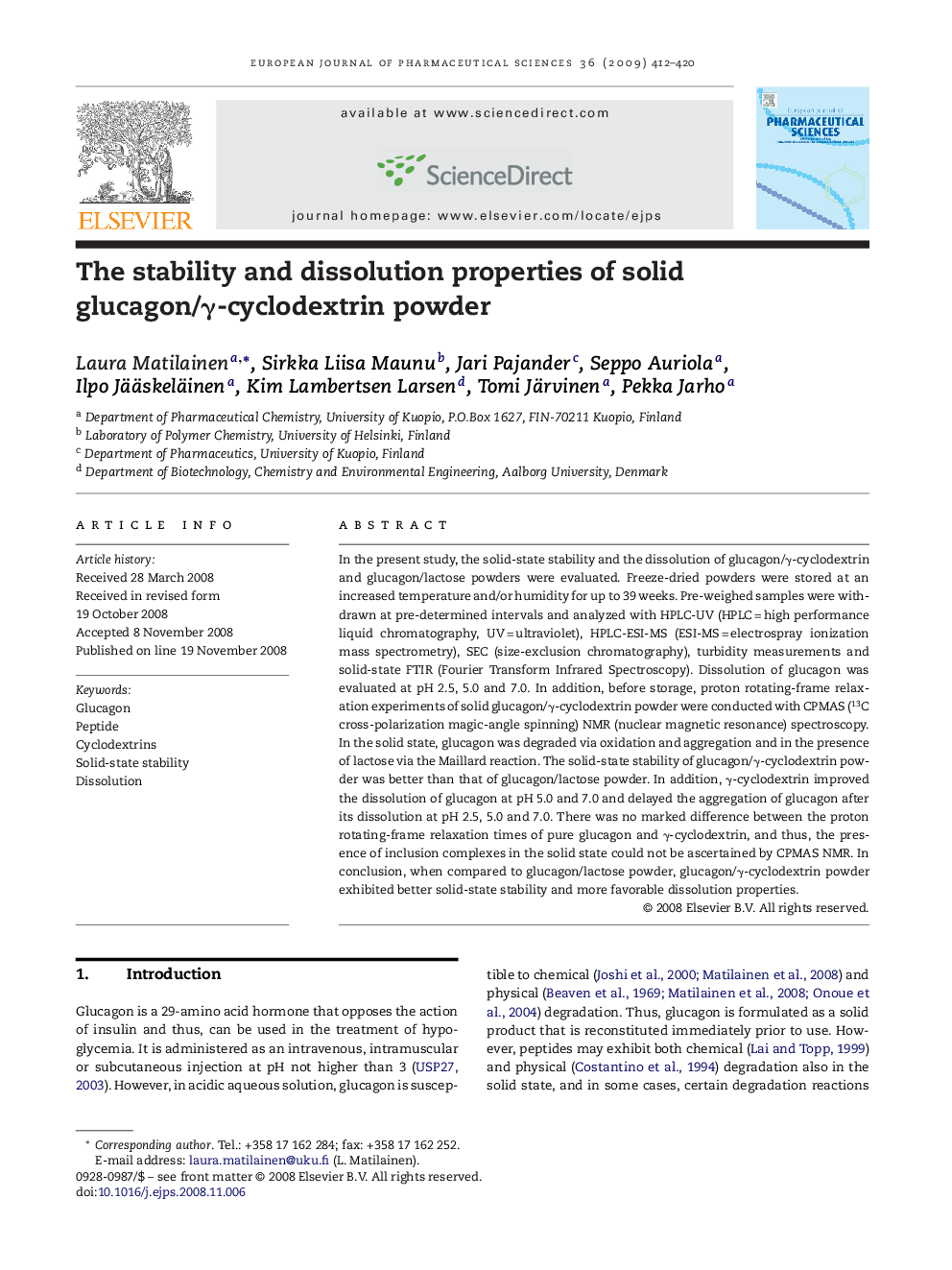| Article ID | Journal | Published Year | Pages | File Type |
|---|---|---|---|---|
| 2482142 | European Journal of Pharmaceutical Sciences | 2009 | 9 Pages |
In the present study, the solid-state stability and the dissolution of glucagon/γ-cyclodextrin and glucagon/lactose powders were evaluated. Freeze-dried powders were stored at an increased temperature and/or humidity for up to 39 weeks. Pre-weighed samples were withdrawn at pre-determined intervals and analyzed with HPLC-UV (HPLC = high performance liquid chromatography, UV = ultraviolet), HPLC-ESI-MS (ESI-MS = electrospray ionization mass spectrometry), SEC (size-exclusion chromatography), turbidity measurements and solid-state FTIR (Fourier Transform Infrared Spectroscopy). Dissolution of glucagon was evaluated at pH 2.5, 5.0 and 7.0. In addition, before storage, proton rotating-frame relaxation experiments of solid glucagon/γ-cyclodextrin powder were conducted with CPMAS (13C cross-polarization magic-angle spinning) NMR (nuclear magnetic resonance) spectroscopy. In the solid state, glucagon was degraded via oxidation and aggregation and in the presence of lactose via the Maillard reaction. The solid-state stability of glucagon/γ-cyclodextrin powder was better than that of glucagon/lactose powder. In addition, γ-cyclodextrin improved the dissolution of glucagon at pH 5.0 and 7.0 and delayed the aggregation of glucagon after its dissolution at pH 2.5, 5.0 and 7.0. There was no marked difference between the proton rotating-frame relaxation times of pure glucagon and γ-cyclodextrin, and thus, the presence of inclusion complexes in the solid state could not be ascertained by CPMAS NMR. In conclusion, when compared to glucagon/lactose powder, glucagon/γ-cyclodextrin powder exhibited better solid-state stability and more favorable dissolution properties.
